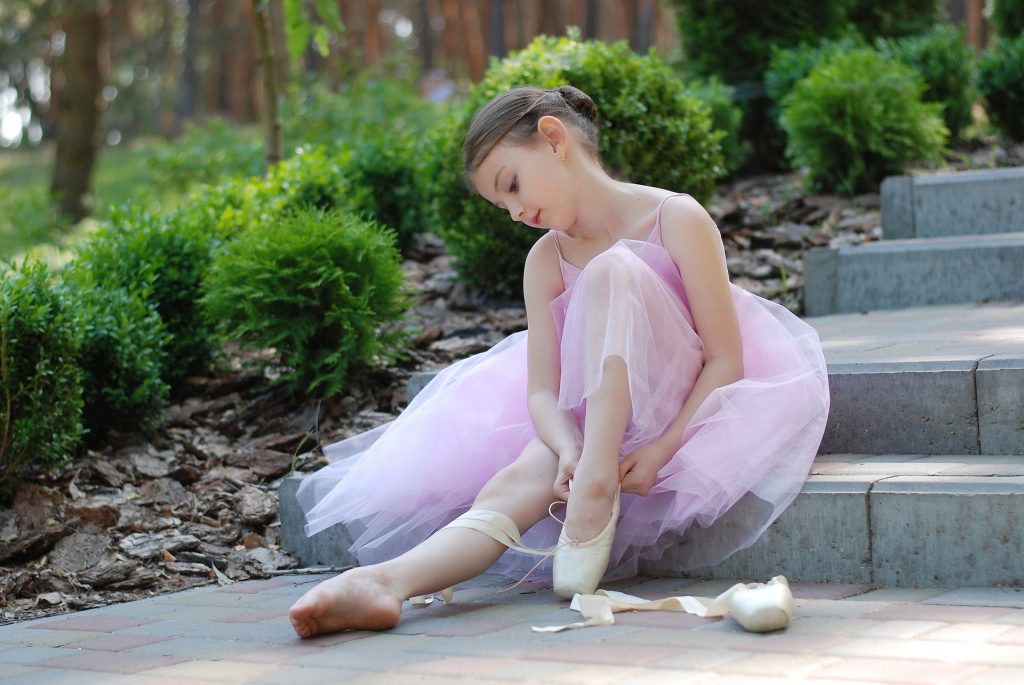
If you have a child who’s learning ballet you’ve probably heard them talking at lengths about dancing en pointe. It is the dream of a lot of young ballet dancers to strap on their first pointe shoes and pirouette around the room!
So, what is “en pointe”? Remember that titanic scene where Rose asks Jack to hold her dress and stands on the tips of her toes? That’s what en pointe is. It is a French term that simply means “on the tips of the toes”.
Even though most young ballet dancers eagerly await the time when they will get to advance to dancing en pointe, it doesn’t happen at the same time for everyone. Some even never get to do it, and if they do never completely master it. With dancing en pointe being a requirement for professional ballet dancers, it is a very important milestone for any young child aspiring to work with a reputable choreographer. Since it is not a normal human function, it is important to do everything you can to help your child advance safely to that stage from very early on. And that entails correct preparation and a Pre-Pointe Assessment before even starting en pointe.
So, What Is a Pre-Pointe Assessment?
Going en pointe is anything but easy. It requires a significant amount of strength to be able to get into that position and stay there. The dancer must also have enough range of movement in the foot and ankle and use that in combination with their strength to achieve this position. It is easy to get swept up with the beauty and poise in this form of art and overlook all the essential precautions that need to be taken. But a pre-pointe assessment is really important for a developing dancer.
The pre-pointe assessment is meant to assess a dancer’s skills to ensure that they are safe while en pointe. This assessment is conducted by trained therapists who have experience with ballet dancers. These therapists must be qualified health professionals who have prepared for years to gain the necessary skills to offer appropriate diagnosis services.
What Happens During a Pre-Pointe Assessment?
Therapists who perform pre-pointe assessment have significant experience in the dance industry at many levels. They will determine your child’s readiness for pointe and include the evaluation of the pointe range, the foot control, turnout range and pelvic stability, and core control. This serves to identify areas for improvement and any incorrect techniques that could be harmful once en pointe.
The Areas Assessed During a Pre-Pointe Assessment Are:

- Technique
Therapists will check that all movements and exercises done are nothing short of perfect. This is important as even the smallest error in soft shoes or demi-pointes can quickly become a large one once en pointe. Any error that is detected during the pre-assessment session will have to be rectified before attempting them en pointe.
- Flexibility
In order to go en pointe, the dancer needs to have enough movement in both their feet and ankles so they can rise onto and over the block of the pointe shoe correctly. The therapist will assess both the range of motion, movement and control through the ankles and feet as well as the ankle alignment. A lack of same will not only decrease the dancer’s ability to raise themselves but will also increase the risks of injury as they will put pressures on the wrong muscles.
- Strength and control
It is impossible to get up en pointe and hold the correct positions for an extended period of time if there is an insufficient amount of strength the calf muscles as well as the hip and gluteals, turn out muscles. The therapist will ensure that these muscles are adequately strong to decrease the risks of muscle fatigue and injury.
- Balance
Should the ballet dancer have poor balance and/or proprioception, they will be exposed to a much higher incidence of injury. (Proprioception is the ability to know where your body is in space.) With the area that comes into contact with the floor being so small when en pointe, any lack of balance and proprioception will be significantly heightened.
General Guidelines
For the ballet dancer to go en pointe, it is important that they have to:
- Be of age 12 or more.
- Have a strong stable core.
- Be anatomically sound and have enough range of motion.
- Train for increased strength to control any hypermobility that they have in their feet and ankles.
- Be at least in their fourth year of training.
- Practice ballet at least twice per week.
By determining adequate strength, control and technique this will help to minimise the risk of injuries as pointe shoes place a large amount of stress and pressure on the feet and lower legs.


